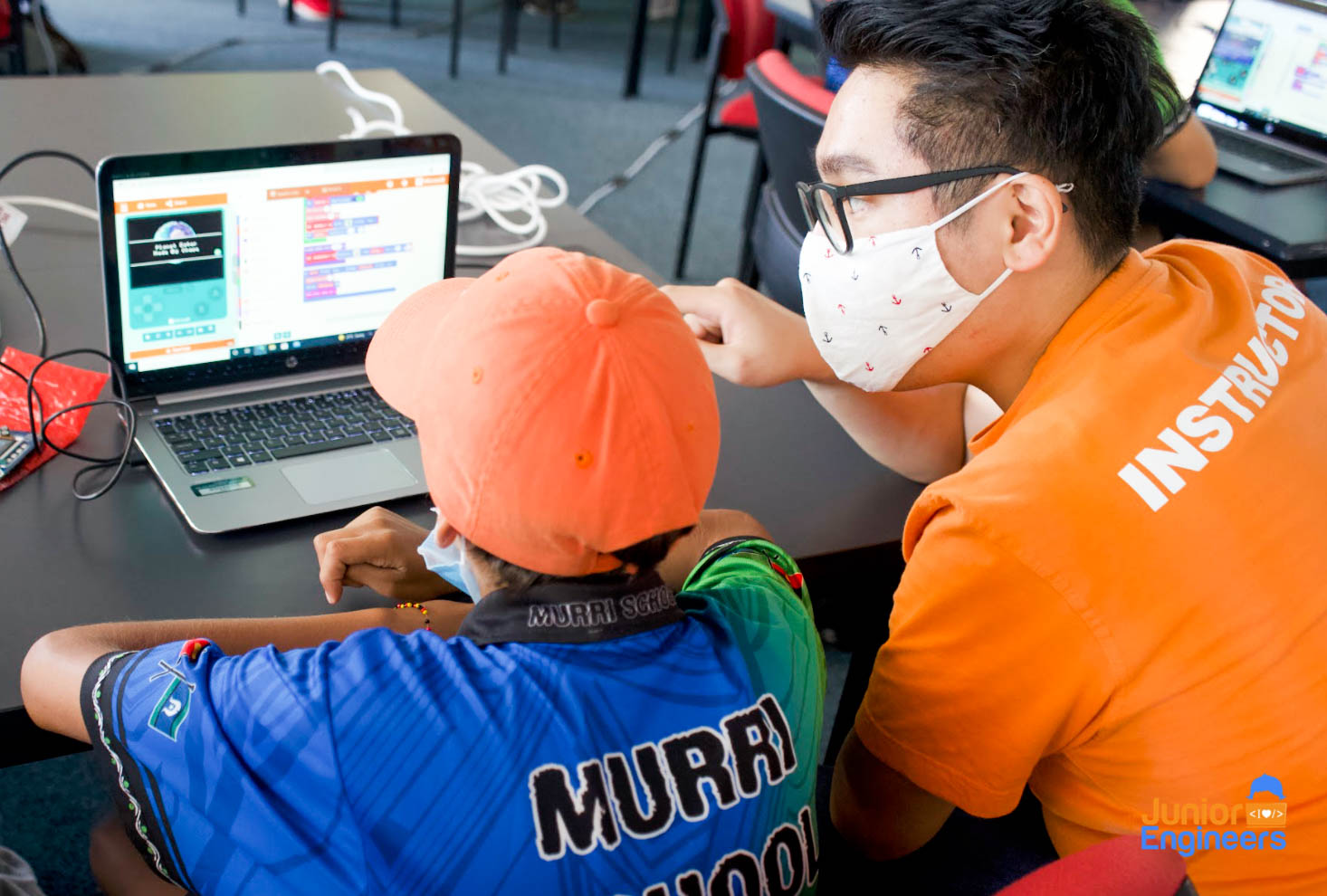A new initiative is providing a space for Aboriginal and Torres Strait Islander students to explore science, technology, engineering and mathematics (STEM) industries — with the goal to empower Indigenous youths to choose STEM fields in higher education.
The Junior Engineers Deadly Coders initiative uses hands-on learning to encourage Aboriginal and Torres Strait Islander kids to participate in STEM — areas in which they are under-represented. At a university level, for example, research shows 0.5 per cent of the Aboriginal and Torres Strait Islander population have a STEM qualification, compared to 5 per cent of Australia’s non-Indigenous population.
“Growing up as an Indigenous or Torres Strait Islander kid, there can be a lot of limiting narratives,” explained Karina Hogan, who sits on the advisory board for the Deadly Coders program.
“Deadly Coders is about not allowing those negative narratives to take hold. It helps kids discover they’re not limited to being what society says they have to be.”
For Andrew Brodie, Director of Partnerships at Junior Engineers, addressing this kind of underrepresentation is why Deadly Coders was created.
“My vision for the program is that we bring down the barriers that exist when it comes to First Nations students studying in STEM related fields at university,” he told create.
For Engineers Australia Fellow Grant Maher FIEAust, also on the Deadly Coders advisory board, “engineering, science and technology can have as big an impact on a community as law or health or politics”.
“It’s a very important area of growth and we want Indigenous kids to feel empowered to get involved in it.”
Programs like Deadly Coders also address an equity issue. “Computer technologies are embedded in daily life,” said Maher. “Indigenous kids are often on the back foot when it comes to access. They should have the same experience with those technologies that so many of us take for granted. For kids to succeed these days, they need to develop tech-based skills.”
Furthermore, it’s well established that diversity in coding leads to more innovative teams creating better outcomes.
“There is a valuable opportunity for two-way learning here with Indigenous students offering different methodologies, different ways of passing on knowledge and insights into the priorities that matter to them.”

Hands-on STEM experience
The first two Deadly Coder events were offered to Queensland primary and secondary school students, and saw a particularly high uptake by female students who made up 57 per cent of the participants.
One of those students was Hogan’s niece.
“She absolutely loved it! She came home talking about all the different possibilities it had opened her eyes to. And that’s so important because Aboriginal women are often the backbone of our communities but also heavily impacted by disadvantage and marginalised when you look at figures around participation on boards and placement in executive roles.
“So if we can facilitate access to these opportunities for the most vulnerable people in our communities early in their education, then we can really start creating pathways.”
“You hear a lot of talk about boosting enrolments of Aboriginal and Torres Strait Islander students at university,” said Maher. “But to drive that tertiary level uptake, you have to give school kids some hands-on experience to show them what it’s like.”
Deadly Coders is all about hands-on learning, where students work on games and apps, voice activated commands and robotics.
“Not only did Junior Engineers do a phenomenal job of creating a culturally safe space for the students,” said Hogan. “But they gave the kids access to the best facilities [through Queensland University of Technology and Griffith University] and experts — amazing equipment and rooms, and role models who look and sound like them.”
“[We want to] create a sustainable pathway from school and university into STEM careers by partnering with tertiary institutions and corporates whose values are aligned with our own,” Brodie said.
Fostering a deadly career in STEM
Continuity and follow through is also critical to making the program a success.
“This isn’t just about having a one-off experience,” said Maher. “Continuous community engagement is essential.”
Hogan agrees.
“Drop in ‘parachute moments’ don’t create meaningful, long-term engagement. Having the follow through is really important and access to an online education system is a big part of that. I’d love to see an eventual transition to community controlled initiatives. That’s when you get the best results.”
“I hope to see as many of the programs as possible running across communities in rural and regional Australia,” said Maher. “We’ve already seen the snowball effect this initiative can have with kids seeing their peers get interested in coding and thinking, well, they came from where I come from, so I could do that too.”
“I’m from one of the communities that was involved in the pilot program,” said Hogan. “So I’ve spoken to the kids who’ve done Deadly Coders and the response is so positive. They truly believe now that they can do something with these skills in the future. They know they can make a career out of it, a really deadly career.”